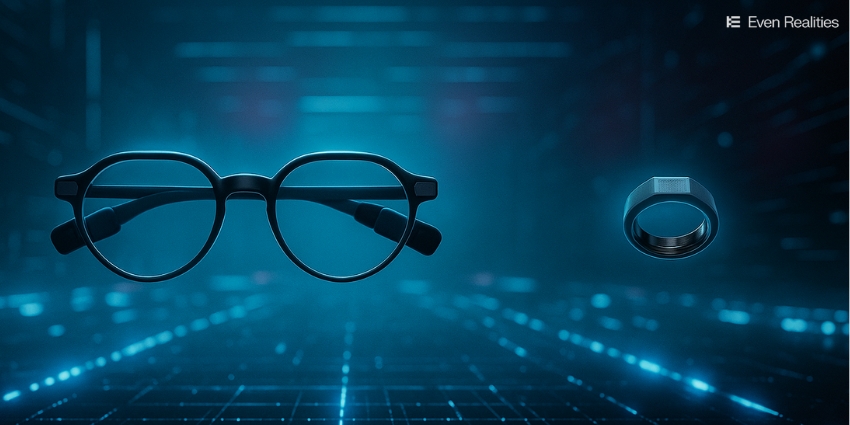The enterprise is becoming the ultimate playground for extended reality. It’s not just consumers using headsets for fun anymore, it’s companies onboarding new hires, training teams, supporting frontline workers, and running product demos. That means business leaders need to be even more cautious about how they assess, and choose secure XR platforms.
Extended reality solutions are, increasingly, data sponges, soaking up information about everything from your office, to your employees’ eye movements, heart rates, and voice prints. While these tools might be capturing that data for a good reason (to help guide business leaders, and personalize immersive experiences), companies can’t ignore the risks.
Unfortunately, while global spending on XR is ramping up fast, the solutions available to secure XR environments aren’t always keeping up. If you’re trying to make sure that you’re investing in a platform that’s both revolutionary and secure, this guide is for you.
What are Secure XR Platforms? The Key Features
Any XR vendor trying to grab the attention of the enterprise will often claim their platform is secure, but that’s not really helpful. What companies need is a checklist to help them compare their options based on their real risk scenarios. Here’s what you should be looking for:
- End-to-End Encryption: If your digital twin of a production facility is floating unencrypted through the cloud during a demo, it’s exposed. Full spatial stream encryption is crucial.
- Advanced Authentication: Typing a password into a VR headset is clunky. Skipping security because it’s clunky is reckless. Look for platforms that support biometric login (like iris scans) or seamless MFA integrations.
- Role-based Access Control: Not everyone should have access to everything. You need granular controls, not just admin vs user. Use project-based access, with audit trails.
- Remote Device Management: If someone walks off with a headset, can you wipe it? Can you update the firmware remotely? ArborXR, Meta Quest for Business, and PICO all offer flavors of this, some better than others.
- Zero-Trust Architecture: Your firewall won’t protect an XR headset in a factory 400 miles from HQ. Assume compromise and verify everything.
- Real Compliance: GDPR, SOC 2 Type II, FedRAMP. If your vendor can’t tell you exactly how they meet these, they’re not focusing on the enterprise.
Secure XR Platforms: How Big Players Stack Up
So, you know what you should be looking for in secure XR platforms – but how effectively are big players actually addressing enterprise needs? It varies. Some companies have gone all-in on developing secure systems for business users, others are further behind.
Here are some of the major vendors with excellent security solutions.
Microsoft XR Solutions
Microsoft’s XR solutions, like Microsoft Mesh build on Azure’s security backbone, and that’s a serious advantage. You get tight integration with Azure Active Directory, full support for multi-factor authentication, and compliance-ready infrastructure for standards like FedRAMP and ISO/IEC 27001.
Security settings mirror what most IT teams already manage in Microsoft 365, which makes rollout smoother. Mesh also supports encrypted session data and access logs, giving admins visibility and traceability across virtual spaces.
If your organization already lives inside Azure and Teams, Mesh feels like a natural extension, but you might need to consider using third-party tools for device management.
Meta Quest for Business
Meta has made a hard pivot toward enterprise, and Quest for Business is its flagship for that shift. It comes with a full device management suite, including remote locking, policy enforcement, and app-level restrictions. Data is encrypted at rest and in transit, and sessions can be locked down based on enterprise policies.
But there are open questions. Meta’s legacy as a consumer-first company means some enterprises still want more clarity around data flows and backend storage practices. For some security and legal teams, that can be a sticking point, especially in regulated industries.
Plus, Meta’s tools aren’t always ideal for bulk deployments and device management, which means some companies end up turning to third parties anyway.
Android XR
Android XR (announced at Google I/O 2024) is Google’s new bet on an open, scalable XR operating system, and it comes with the flexibility you’d expect. You get sandboxed apps, Play Store vetting, and standard Android security layers like Verified Boot and SELinux.
Still, Android XR is a framework. It’s not a plug-and-play platform. That means security is only as good as the integrators you choose, the hardware partners you trust, and the way you configure your stack. You’ll need a cautious approach.
If you’ve got the engineering power to do it right, Android XR gives you freedom. But without strong internal controls, it can leave more doors open than you’d like.
Varjo
Varjo has a strong focus on the enterprise landscape, making it a good choice for companies in search of secure XR platforms. Certain devices, like the XR-4 Secure Edition is built for defense, aerospace, and industries where protection is crucial. It supports on-premises data processing, complies with the U.S. Trade Agreements Act (TAA), and offers advanced biometric protection.
Their devices don’t just encrypt, they isolate. That’s valuable for teams handling classified data, proprietary R&D, or high-value IP. Of course, it comes at a cost. Varjo’s platform is premium in every sense: hardware, support, and pricing.
Still, if security is absolutely essential, Varjo goes above and beyond to ensure that companies can maintain control over their data and systems.
PICO XR
PICO has been steadily gaining traction in enterprise circles, especially across healthcare, training, and field services. The PICO Business Device Manager gives IT teams the kind of centralized visibility they expect, including SSO support, remote wipes, and configuration policies.
Security-wise, it covers the basics well. But documentation around certifications (like SOC 2 or ISO) isn’t always as transparent as some of its competitors. If you operate in highly regulated sectors, that could be a hurdle. That said, for mid-sized companies looking for simple, manageable rollouts, PICO offers a well-balanced mix of usability and control.
Plus, the PICO business management tools are very easy to use, and with the developer system constantly evolving, there’s a lot of flexibility.
Deploying Secure XR Platforms: On-Prem vs Cloud
Choosing secure XR platforms is a good first step, but it’s also important to think about how you’re going to deploy your technology. Where should everything live? The cloud? Your own servers? A bit of both? That all depends on you.
An on-premises roll-out gives you complete control. You can decide where data is stored, who can access it, and even how security is implemented. Many companies in healthcare, defense, and manufacturing value that level of oversight.
But going on-prem also means owning everything. You’ll need to invest in infrastructure up front, maintain hardware, apply security patches, and have the internal muscle to manage it all. If something breaks, it’s up to you to deal with the fix.
Cloud-based XR gives you more freedom and flexibility. You can deploy new experiences across teams or locations in days. Costs stay lower up front, and the infrastructure burden shifts to your provider. But you don’t get to hand off all responsibility. While cloud vendors keep their platforms secure, you still need to think about how you configure things, how access is managed, and how your data is protected.
For some companies, the best approach will be hybrid. You could keep sensitive data in-house and move less critical workloads into the cloud. Maybe you host your training simulations in the cloud but keep your digital twin models or biometric logs locked down in a secure data center.
Certifications & Compliance: SOC 2, GDPR, FedRAMP, and Beyond
One thing you might struggle with is what type of compliance certifications you should be looking for in secure XR platforms. After all, the compliance rules keep changing. For now, there are a few major certifications to consider:
- SOC 2: A SOC 2 certificate immediately shows you that a vendor has taken real steps to protect your data and systems. If you’re handling employee, customer, or any other sensitive data in XR, a SOC 2 certification is a great green flag.
- GDPR: If your XR platform or tools collect any data on EU citizens, it needs to be GDPR compliant. Make sure that you’re ready for GDPR compliance if you’re going to be tracking eye movement, biometrics, location data, and so on.
- FedRAMP: If you’re working with US federal agencies, make sure your platform is compliant with FedRAMP. This means it follows strict rules around encryption, monitoring, identity management, and security auditing.
Beyond that, depending on your industry and use cases, you might want to consider ISO/IEC 27001 certifications, HIPAA, and PCI-DSS compliance.
Secure XR Platforms: Crucial for Enterprises
Impressive hardware and immersive graphics don’t matter if your XR platform risks your data, IP, or people. Security isn’t an afterthought for an XR deployment; it should be the foundation on which everything else is built.
XR is only going to become more embedded in the way we work. That means if you want to be on the cutting edge, you need to start with secure XR platforms from day one. Are you ready to set yourself up for a safe, secure, and successful XR adoption plan?







